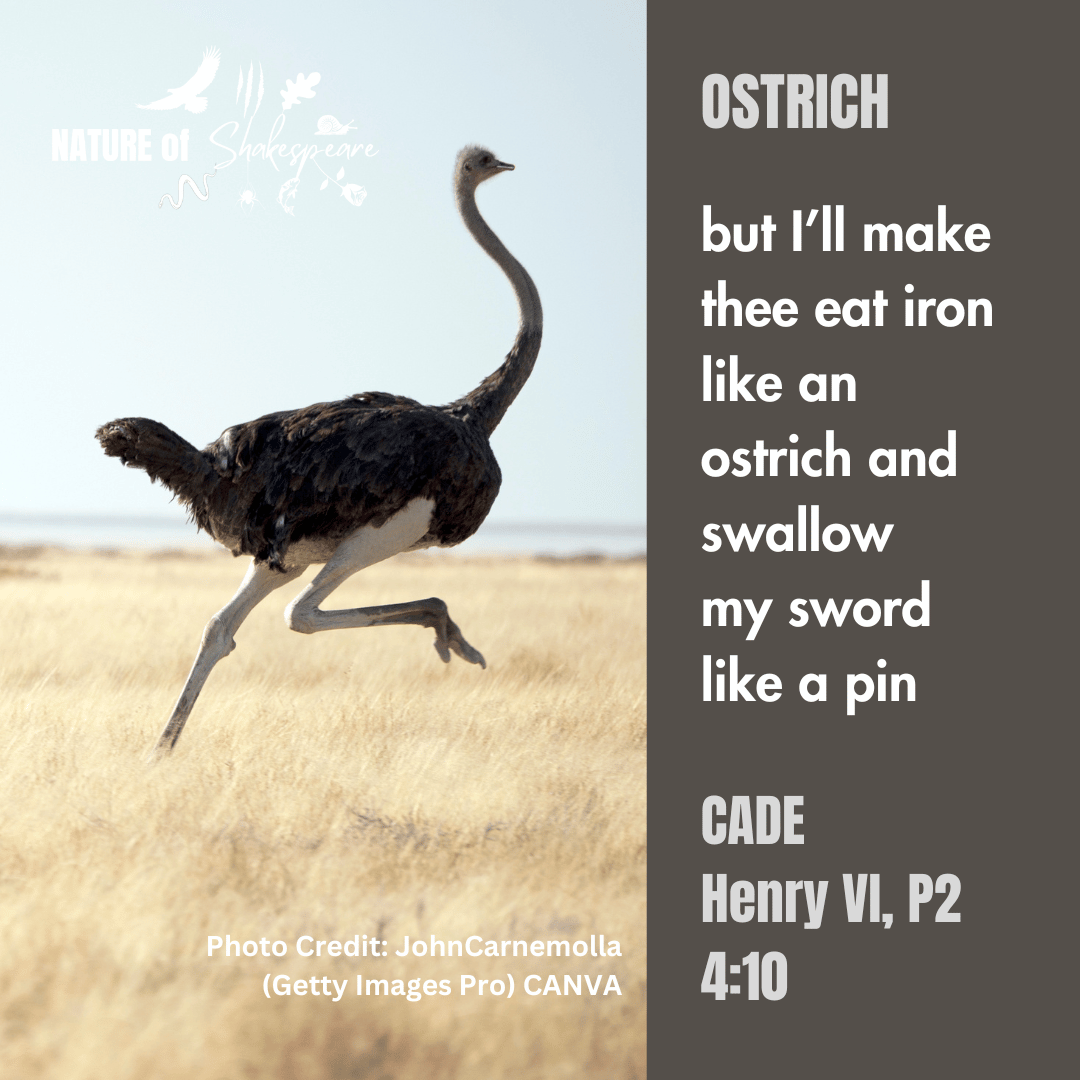OSTRICH
4th April 2024
Photo Credit: JohnCarnemolla (Getty Images Pro), CANVA
QUOTATION
Here’s the lord of the soil come to seize me for a stray,
for entering his fee-simple without leave. -
Ah, villain, thou wilt betray me and get a thousand crowns of the King
by carrying my head to him; but I’ll make thee eat iron like an ostrich
and swallow my sword like a great pin, ere thou and I part.
CADE: Henry VI, Part 2, Act 4, Scene 10
OSTRICH (Struthio camelus)
The Ostrich is a large flightless bird, native to the grasslands and savanna of certain areas of Central, Eastern and Southern Africa. Ostriches, their feathers and eggs have been used for millennia in heraldry, art and design as well as moralising. The Ostrich appears several times in the Bible and generally as the inhabitant of empty, lawless places and the Ostrich’s habitat of laying its eggs in the sand and leaving them was identified as cruel or uncaring, “even the dragons draw out the breasts, and give suck to their young, but the daughter of my people is become cruel like the ostriches in the wilderness” (Lamentations 4:3). Christian moralist writers including Hugh de Fouilley considered the Ostrich to represent insincerity and vanity.
There was a wide spread medieval tradition that Ostriches ate iron, including in Shakespeare’s quotation above. There were attempts to disprove this theory including by Albertus Magnus and Thomas Browne, but it persisted for centuries and was depicted in art and heraldry.
Common Ostriches are considered ‘Least Concern’ in the IUCN Red LIst categories but their wild populations are declining, but the Somali Ostrich (Struthio molybdophanes) is assessed as Vulnerable in the wild.
More Information
Folger Shakespeare: Search Shakespeare’s Works
Hugh de Fouilley, Medieval Book of Birds (translated by Willene B. Clark, 1992: accessed via Archive.org)
IUCN Red List: Common Ostrich , Somali Ostrich
Lutz, C. 1979, Some Medieval Impressions of the Ostrich, The Yale University Library Gazette, Vol 54, No, 1, pp 18-25; accessed via JSTOR.org)
